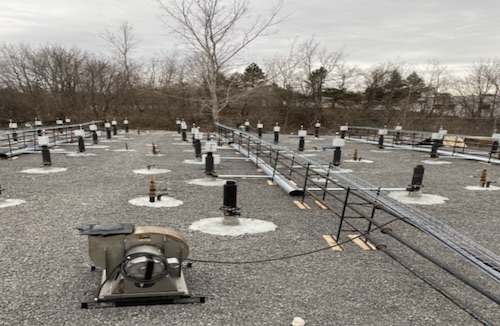EPA working on final phase of Diaz cleanup in Holley

Provided photo: These heater wells are under construction in Holley.
HOLLEY – The federal Environmental Protection Agency has begun the second and final phase of a thermal treatment of contaminated soil and groundwater at the Diaz Chemical Superfund site in Holley, the EPA announced in an update to the community.
The larger-scale system is being used to treat the remainder of the on-site contamination. EPA started constructing the system in May 2020, using samples and other information obtained during the first phase of treatment that used a smaller-scale version of the system.
EPA treated about 10% of the contaminated soil and groundwater at the site under that first phase, which was completed in October 2018.
Construction, originally slated to begin in March 2020, was postponed in consultation with the Village of Holley. Following appropriate Covid-19 health and safety protocols, construction was completed in early June 2021.
The thermal cleanup is a $20 million cleanup project at the former Diaz Chemical site in Holley. The EPA is planning to have about 20 personnel on site for phase 2 of the cleanup on Jackson Street.
The EPA has already spent $12.5 million on the cleanup, using money from the Superfund. The EPA has removed buildings, pipes, drums and tanks. Only two warehouses remain from Diaz, which declared bankruptcy and abandoned the site in 2002. The company operated for about 30 years in Holley.
The final phase of treatment targets 1.5 acres of the site and will be performed in two stages. The treatment system is projected to operate for up to four years to clean up the site.
Thermal treatment system
The thermal treatment system uses heat to turn the contaminants in the soil and groundwater
into vapors. The vapors will then be captured by extraction wells and treated by a combination of compression, cooling, condensation and granular activated carbon. The system will operate 24 hours a day, seven days a week.
In addition, EPA will excavate soil from two areas. The excavated soil will be consolidated, thermally treated, and disposed of off-site, the EPA said. The excavated areas will be backfilled with clean soil. EPA will monitor the air around the perimeter, monitor noise, and follow a traffic control plan to minimize disruptions to the neighborhood.
After the second phase of operations is completed, EPA will remove the treatment equipment and restore the property. This will include regrading the site to ensure it has proper drainage and revegetation so as to prevent erosion.





































































